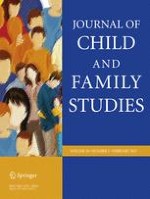22-09-2016 | Original Paper
Parent and Teacher Agreement of Behavior Problems in Youth Diagnosed With and Without Autism Spectrum Disorders
Gepubliceerd in: Journal of Child and Family Studies | Uitgave 2/2017
Log in om toegang te krijgenAbstract
The prevalence and severity of behavioral problems in youth with autism spectrum disorders (ASD) may be context dependent leading to discrepant informants’ reports and complicating case conceptualizations and treatment goals. This study examines the inter-rater agreement of parents and teachers on behavioral problems of 58 youth with ASD and 42 youth without an ASD diagnosis. Parents and teachers of 26 youth with ASD (M = 4.08, SD = 1.02) and 21 youth with non-ASD diagnoses (M = 4.38, SD = 0.80), ages 2–5 years, and 32 youth with ASD (M = 7.47, SD = 1.44), and 21 youth with non-ASD diagnoses (M = 7.71, SD = 1.23), ages 6–10, completed the Child Behavior Checklist and Teacher Report Form. Compared to youth with a non-ASD diagnosis (ages 2–5 years), youth with ASD also had poor to moderate agreement across subscales with the exception of comparable substantial agreement on Externalizing Behavior (ICC = 0.73 and ICC = 0.63, respectively) and Aggressive Behavior subscales (ICC = 0.72 and ICC = 0.69, respectively). Compared to youth with a non-ASD diagnosis (ages 6–10 years), youth with ASD similarly had poor agreement across subscales with the exception of moderate agreement on Anxious/Depressed subscale (ICC = 0.41 and ICC = 0.06, respectively). These results suggest that the severity and prevalence of behavior problems in youth may depend on the context and reporter of the symptoms.
